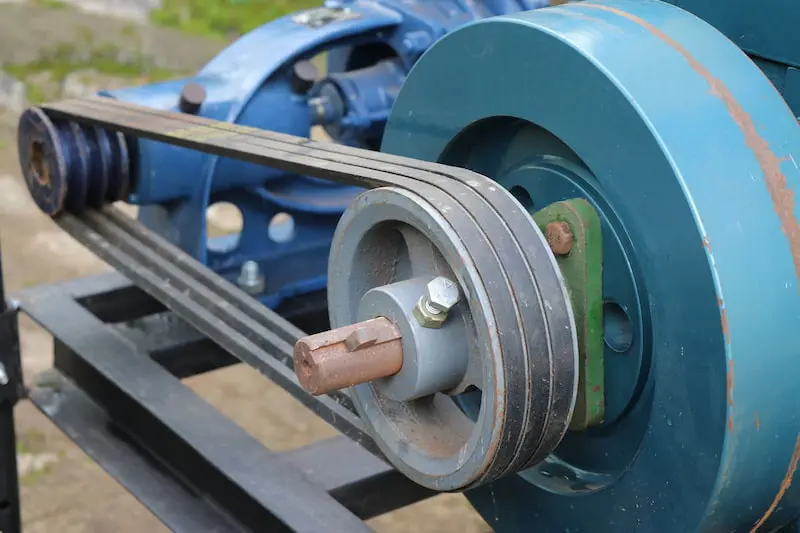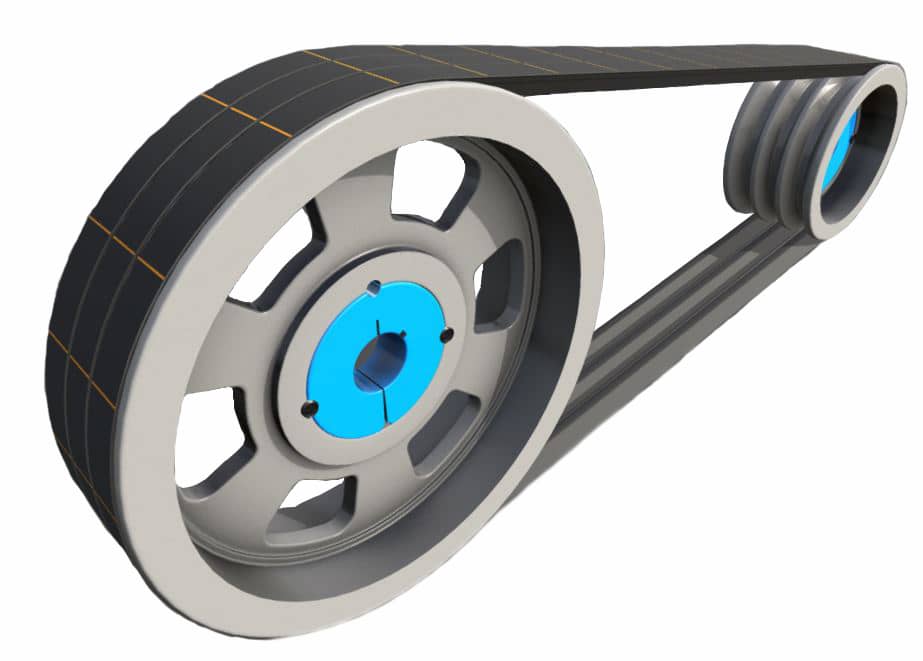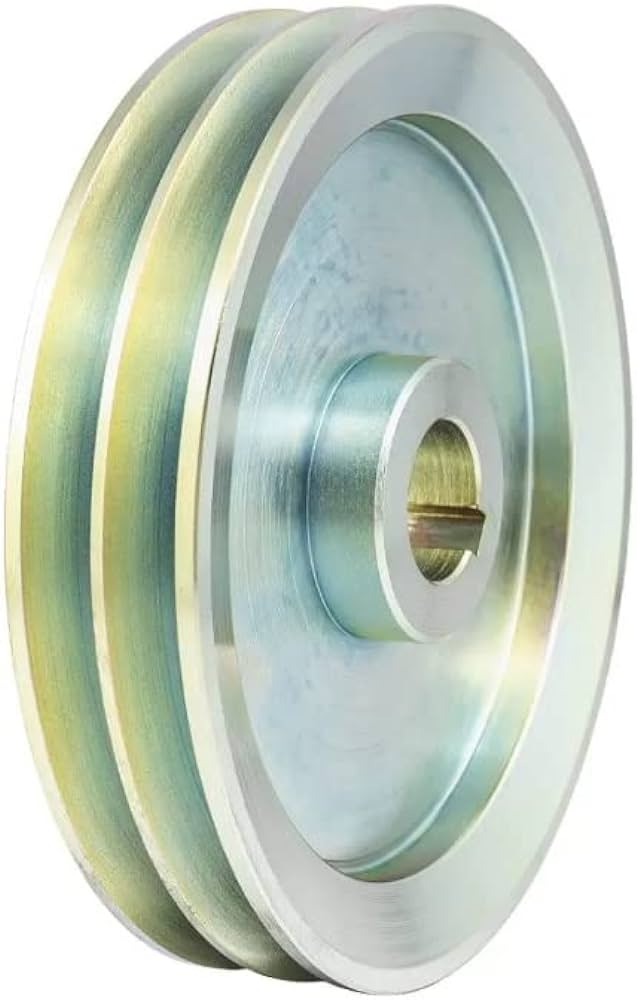Product Description
Large Diameter 630mm Hot Sale Conveyor Belt Idler Roller Drum Head Pulleys
| Type | Belt width(mm) | Standard Diameter(mm) | Length(mm) |
| Drive pulley | 500 | 500 | Length of the pulley depends on the belt width of the conveyor |
| 650 | 500~630 | ||
| 800 | 630~1000 | ||
| 1000 | 800~1150 | ||
| 1200 | 800~1150 | ||
| 1400 | 1000~1350 | ||
| 1600 | 1150~1600 | ||
| 1800 | 1150~1800 | ||
| 2000 | 1350~2000 | ||
| 2200 | 1600~2200 | ||
| 2400 | 1800~2400 | ||
| Bend pulley | 500 | 250~500 | |
| 650 | 250~630 | ||
| 800 | 250~1000 | ||
| 1000 | 250~1600 | ||
| 1200 | 250~1600 | ||
| 1400 | 315~1600 | ||
| 1600 | 400~1600 | ||
| 1800 | 400~1600 | ||
| 2000 | 500~1600 | ||
| 2200 | 630~1600 | ||
| 2400 | 800~1600 |
Advantages:
1. Dust-proof & Water-proof
The contact-sealing is adopted, which enjoys more superior dustproof and waterproof
2. Low Vibration and Noise
Static balance test to ensure G40 accuracy level.
3. Strong Force of Friction
The material for shaft is forged shaft of 40Cr instead of #45 round steel,which improves mechanical property
4. Easy Installation & Simple Maintenance
The bearing block and taper-lock are ground, which ensure the installation precision
5. Min 50000 hours service life
1.)Pipe: seamless steel : it was precisely cut by using the flame cutting machine.
2.)The sleeve & disc :it was cut by using the laser cutter machine precisely.
3.)Shaft: We chose 45# round steel & sleeve and process the whole shaft so that it ensures shaft concentricity and reduction for the eccentric shaft force. It make sure the pulley move more stable
4.)Bearing set & bearing: high-quality bearing which is hot charging and bearing block are equipped inner bearing enlargement device, so the bearing can be easily pushed to the bearing position and it avoids the bearing damage from the beating.
Testing for the pulley
We have the professional testing machine for the pulley. We need make the eliminating inner stress treatments when the pulley’s withstand forces exceed 80KN and we will make the static balance inspection when the belt speed exceeds 2.5m/s.
And we laso make the Drum dynamic balance test for the pulley to confirm the good quality before sent to the customer.
Packing:
After all the goods tested then make the packing, then the goods put into the warehouse to wait to send to the customer
Our projects:
Exhitbition and the customer visiting~
We also attend many kinds of related exhibitations to know more our products for the customer. Such as Canton fair, buma fair andother minging fairs.
Our company and products get the customer approve and many customer vist us and make the orders for us.
Company certificate &honor
We have the ISO 9001 certification The products have gained various patents. For example: Trademarks, patents,ects.
After sale service
We provide the customer best after sale services, and we solve the problems any time.
1)Installation guide;
2)Provide drawings and instructions;
3)On-site guidance of dispatched engineers;
4)Product after sales:
The machine has a long warranty of 2 years ;
Roller warranty 50,000 hours.
The company introduction:
HangZhou CHINAMFG conveying Machinery Co.,Ltd was founded in 2005.
It’s registered capital is 11.68million CNY and It is private joint-stock enterprise. Our main products are cnoveyor roller,idler,frame, pulley,belt and belt conveyor system for TD75 ,DTII,DTIIA,CEMA ects.
we has large lathes, numerical control, double pressing machine, double welding machine, double boring lathe, milling machine, sawing machine and so on. The products have gained various patents. We can produce more than 1 thousand rollers and 10 pulleys per day.
We have the professionalQC dept. to keep the good quality before the goods sent out. The products are sold to Middle East,Africa ,Australia,Europe,Southeast Asia,Russia and some other countries and regions. We will Strengthen the inner management and improve our products’ quality constantly.We will offer the best products for customers from the beginning to the end.
FAQ
1.Q: Your bearing type and brand usually use?
A:Large ball bearing type deep ball bearing withSRB, and according to customer’s requirements.
2.Q: How is your Payment Term?
A: T/T or L/C. Another payment term we can also discuss.
3.Q: Can you customize it?
A: We support customization according to your request.
4.Q: What’s the MOQ?
A: 3 piece.
5.Q: What’s the production capacity of your conveyor pulley?
20 pcs/day.
6.Q: What’s your roller’s lifetime?
Our pulley have a long lifetime with good performance and usually
make sure 30000 to 50000 hours under the normal site and operation.
Contact us:
Contact person: Sunny Li
/* March 10, 2571 17:59:20 */!function(){function s(e,r){var a,o={};try{e&&e.split(“,”).forEach(function(e,t){e&&(a=e.match(/(.*?):(.*)$/))&&1
| Material: | Carbon Steel |
|---|---|
| Surface Treatment: | Baking Paint |
| Motor Type: | No Motor |
| Installation: | Horizontal |
| Bearing: | Self-Aligning Ball Bearings |
| Pulley Lagging Type: | Heat/Thermal Vulcanized Rubber Casting, Rubber Lag |
| Customization: |
Available
| Customized Request |
|---|

Can belt pulleys be part of HVAC systems and air conditioning units?
Yes, belt pulleys can indeed be part of HVAC (Heating, Ventilation, and Air Conditioning) systems and air conditioning units. They play a crucial role in the operation of these systems, contributing to the movement of air, power transmission, and controlling the functionality of various components. Here’s a detailed explanation of how belt pulleys are involved in HVAC systems and air conditioning units:
1. Air Handling Units: Belt pulleys are commonly used in air handling units (AHUs) of HVAC systems. AHUs are responsible for circulating and conditioning air within buildings. Belt-driven AHUs employ pulleys to drive the fans or blowers that move air through the system. The rotation of the pulleys drives the fan blades, creating airflow and facilitating the exchange of heat or coolness in the air conditioning process.
2. Cooling Towers: Cooling towers, a key component of HVAC systems, are used to remove heat from the building. Belt pulleys are employed in cooling towers to drive the fan systems that enhance the cooling process. The pulleys drive the cooling tower fans, which draw in ambient air and facilitate the evaporation of water, effectively dissipating heat and lowering the temperature of the circulated water.
3. Fan Coil Units: Fan coil units are part of HVAC systems and provide localized heating or cooling to specific areas within a building. Belt pulleys can be used in fan coil units to drive the fans that distribute conditioned air. The rotation of the pulleys drives the fan blades, enabling the movement of air through the unit and delivering heating or cooling to the desired space.
4. Compressors: In air conditioning units, belt pulleys are employed in the compressor system. The compressor is responsible for compressing the refrigerant, which enables the cooling process. Belt-driven compressors use pulleys to drive the compressor’s motor, which pressurizes the refrigerant and facilitates its movement through the air conditioning system. The pulleys ensure the efficient operation of the compressor, which is essential for the cooling function.
5. Power Transmission: Belt pulleys are essential for power transmission in HVAC systems and air conditioning units. They are used to transmit power from the motor or engine to various components, such as fans, compressors, pumps, and other mechanical parts. The rotation of the pulleys transfers power and enables the operation of these components, ensuring the functionality of the HVAC system or air conditioning unit.
6. Variable Speed Control: Belt pulleys can also be utilized for variable speed control in HVAC systems. By using pulleys of different sizes or incorporating variable speed pulley systems, the rotational speed of fans or other driven components can be adjusted. This allows for precise control over airflow, temperature, and overall system performance, optimizing energy efficiency and comfort levels in the building.
7. Maintenance and Serviceability: Belt pulleys in HVAC systems and air conditioning units are designed for easy maintenance and serviceability. They allow for straightforward belt replacement or adjustment, ensuring that the system can be properly maintained and serviced to maintain optimal performance and reliability.
In summary, belt pulleys are integral components of HVAC systems and air conditioning units. They are involved in power transmission, driving fans and blowers, controlling compressors, and facilitating the movement of air for heating, cooling, and ventilation. Belt pulleys contribute to the overall functionality, energy efficiency, and serviceability of HVAC systems, playing a vital role in providing comfortable and controlled environments in residential, commercial, and industrial buildings.

Can belt pulleys be customized for specific machinery and equipment?
Yes, belt pulleys can be customized to meet the specific requirements of machinery and equipment in various applications. Customization allows for the adaptation of belt pulleys to specific dimensions, performance characteristics, and operational needs. Here’s a detailed explanation of how belt pulleys can be customized for specific machinery and equipment:
1. Dimensional Customization: Belt pulleys can be customized to match the dimensional requirements of the machinery and equipment they will be installed in. This includes customizing the diameter, width, and groove dimensions of the pulleys to ensure proper fit and alignment with the system. Customization ensures that the belt pulleys integrate seamlessly into the machinery, optimizing performance and reliability.
2. Material Selection: Depending on the specific requirements of the machinery and equipment, belt pulleys can be customized with different materials. The choice of materials can be based on factors such as load capacity, environmental conditions, chemical resistance, and operating temperature. Common materials used for customized belt pulleys include steel, aluminum, cast iron, and various composites. Custom material selection ensures that the pulleys can withstand the demands of the application.
3. Specialized Coatings and Finishes: In certain applications, customized belt pulleys may require specialized coatings or finishes to enhance their performance. For example, pulleys used in food processing or pharmaceutical industries may require coatings that comply with specific safety and hygiene standards. Customized coatings can also provide corrosion resistance or reduce friction, improving the overall efficiency and longevity of the pulleys.
4. Groove Profiles: Belt pulleys can be customized with specific groove profiles to match the type of belt being used. Different belts, such as V-belts, timing belts, or flat belts, have varying groove requirements. Customizing the groove profiles ensures optimal belt engagement, maximizing power transmission efficiency and preventing belt slippage.
5. Special Features: In some cases, customized belt pulleys may require additional features or modifications to meet specific operational needs. This can include the incorporation of keyways, set screws, flanges, or other attachments to ensure proper alignment and secure mounting. Customized pulleys can also be designed with specific hub configurations or balancing requirements to achieve smooth and balanced operation in the machinery and equipment.
6. Performance Optimization: Customized belt pulleys can be tailored to optimize performance in specific applications. This may involve adjusting the pulley design, such as modifying the number of grooves or altering the pitch diameter, to achieve the desired speed ratios or torque requirements. Performance optimization ensures that the customized pulleys contribute to the efficient and reliable operation of the machinery and equipment.
Overall, belt pulleys can be customized to match the dimensional requirements, material specifications, coating needs, groove profiles, special features, and performance optimization of specific machinery and equipment. Customization ensures that the pulleys seamlessly integrate into the system, providing efficient power transmission and meeting the unique operational needs of the application.

How does a belt pulley function in power transmission?
A belt pulley plays a crucial role in power transmission by enabling the transfer of rotational motion and torque between rotating shafts. It functions as a mechanical device that connects the driving shaft to the driven shaft through a belt or a rope. The rotational motion of the driving shaft is transmitted to the driven shaft via the belt pulley, allowing power to be transferred from one shaft to another. Here’s a detailed explanation:
A belt pulley functions in power transmission through the following process:
- The driving shaft, which is typically connected to a motor or an engine, rotates and generates rotational motion and torque.
- The belt pulley is mounted on the driving shaft, and its grooved rim is designed to engage with a belt or a rope.
- A belt or a rope is wrapped around the groove of the belt pulley, creating a secure connection between the pulley and the belt.
- As the driving shaft rotates, the belt or rope, in contact with the grooved rim of the pulley, starts to move.
- The movement of the belt or rope causes the belt pulley to rotate.
- Since the belt pulley is connected to the driven shaft, which is the output shaft of the system, the rotational motion of the pulley is transferred to the driven shaft.
- Consequently, the driven shaft starts to rotate at the same speed and direction as the driving shaft.
- The rotational motion and torque generated by the driving shaft are effectively transmitted to the driven shaft through the belt pulley and the belt or rope.
It’s important to note that the design and configuration of the belt pulley, along with the belt or rope, are essential for efficient power transmission. The groove profile of the pulley should match the belt or rope profile to ensure proper engagement and prevent slippage. The tension in the belt or rope should be appropriately adjusted to maintain a secure connection between the pulley and the belt. Additionally, the size and ratio of the pulleys connected by the belt can be adjusted to control the speed and torque output, providing flexibility in power transmission.
In summary, a belt pulley functions in power transmission by connecting the driving shaft to the driven shaft through a belt or a rope. It transfers the rotational motion and torque generated by the driving shaft to the driven shaft, allowing power to be transmitted between the two shafts. The design, configuration, and tensioning of the belt and the pulley are crucial for efficient and reliable power transmission in mechanical systems.


editor by CX
2024-01-12